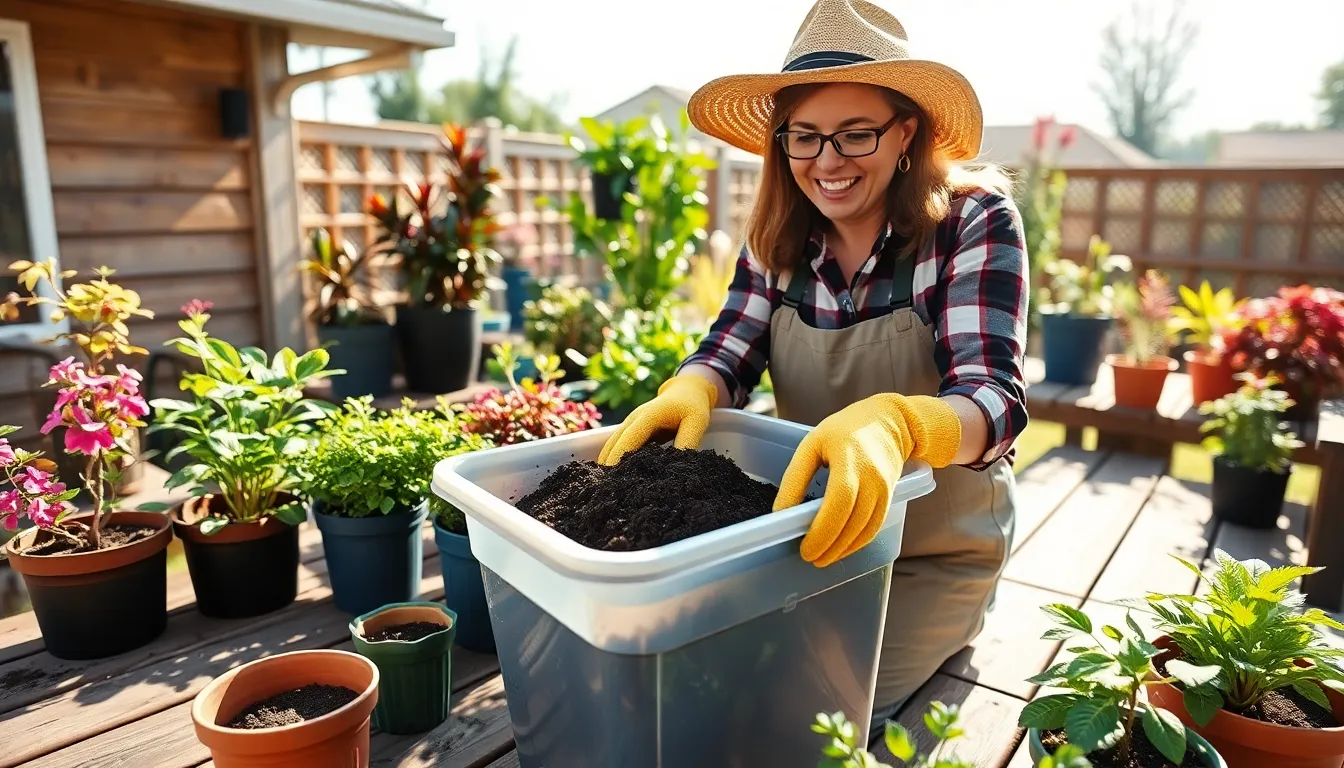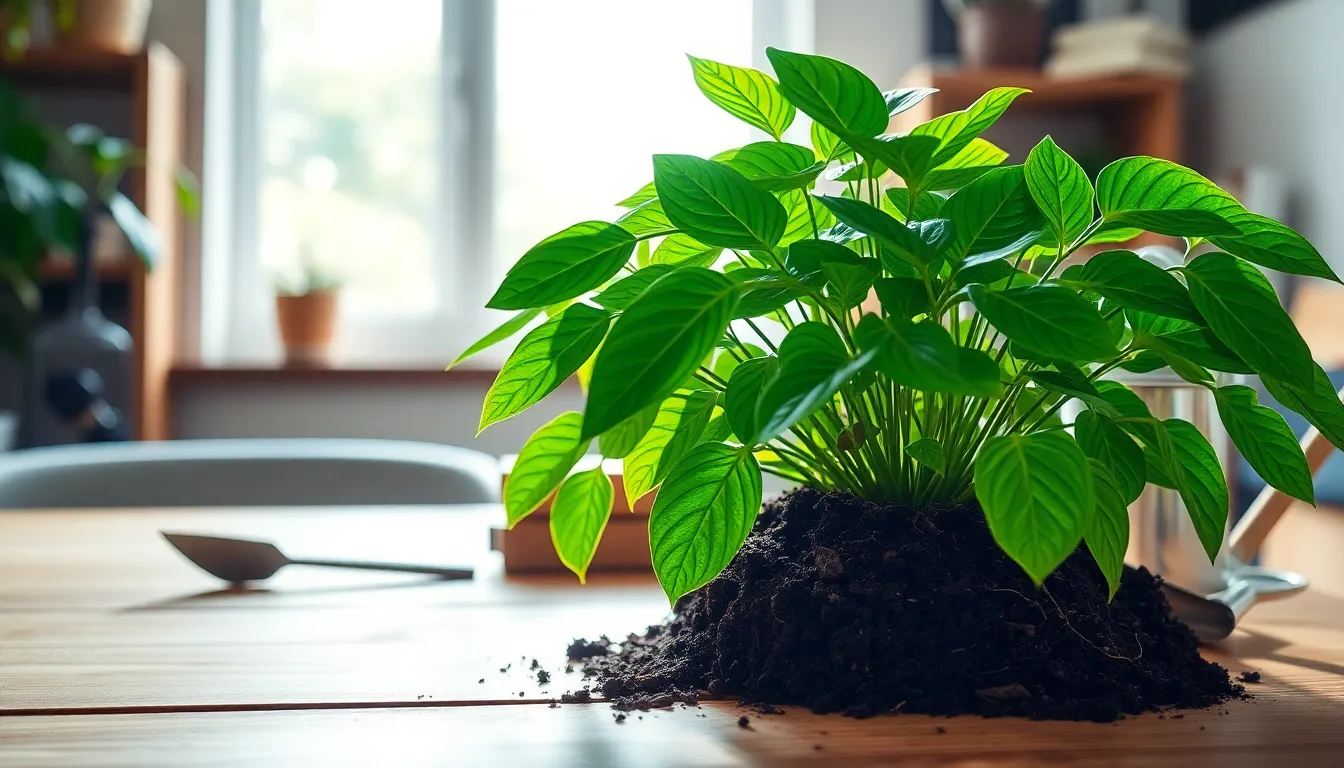Indoor plants can be a source of joy and tranquility, but choosing the right soil can feel like navigating a minefield. With so many options, it’s tempting to grab that bag of outdoor potting soil sitting in the garage. After all, who wouldn’t want their indoor jungle to thrive like a tropical paradise? But before making that leap, it’s crucial to consider whether outdoor soil is the secret sauce for your leafy friends or a recipe for disaster.
Using outdoor potting soil indoors might seem like a brilliant shortcut, but it comes with its own set of challenges. From pesky pests to nutrient imbalances, it’s not as straightforward as it sounds. Let’s dig into the nitty-gritty of this gardening conundrum and find out if that outdoor soil can truly deliver the indoor plant success you’re dreaming of.
Can You Use Outdoor Potting Soil for Indoor Plants
Outdoor potting soil serves a specific purpose, primarily designed for garden beds and outdoor planters. Its composition differs significantly from indoor soil as it often includes organic matter, minerals, and additives like compost or peat moss.
What Is Outdoor Potting Soil?
Outdoor potting soil consists of a blend tailored for external conditions. This soil typically provides essential nutrients for outdoor plants to thrive in varied weather. Common ingredients include bark, perlite, sand, and fertilizers, which support growth in gardens. Moisture retention and excellent drainage also characterize this soil, making it suitable for fluctuating outdoor environments.
Key Differences Between Outdoor and Indoor Soil
Outdoor soil differs from indoor soil in composition, texture, and purpose. It often contains larger particles, promoting drainage and aeration for outdoor plants. In contrast, indoor soil focuses on moisture retention and appropriate nutrient balance suitable for houseplants. Indoor soil usually features a finer texture, providing stability for root systems in pots. Additionally, outdoor soil has higher risks of pests and pathogens, which could negatively impact indoor plants when used interchangeably.
Benefits of Using Outdoor Potting Soil Indoors

Using outdoor potting soil for indoor plants offers several advantages. Notable benefits include cost-effectiveness and nutrient availability, both of which contribute to healthier plant growth.
Cost-Effectiveness
Outdoor potting soil often costs less than specialized indoor mixes. Many gardeners save money by purchasing larger bags of outdoor soil that can be used for multiple plants. Reduced spending on soil permits allocation of budget towards other essential supplies, such as fertilizers or pots. Choosing outdoor soil can also minimize trips to the store and the need for multiple purchases. Overall, outdoor potting soil provides a practical option for budget-conscious plant enthusiasts.
Nutrient Availability
Outdoor potting soil contains diverse nutrients, which can promote robust growth in indoor plants. This type of soil features organic matter, minerals, and beneficial additives like compost or peat moss. Many outdoor soils include trace elements that improve soil fertility and support plant health. Nutrient-rich soil helps ensure plants receive the essential building blocks for growth, resulting in vibrant leaves and strong roots. Utilizing outdoor potting soil can enhance the vitality of indoor plants while delivering additional nutrients that indoor-specific soils may lack.
Potential Drawbacks of Using Outdoor Potting Soil Indoors
Using outdoor potting soil for indoor plants presents several potential drawbacks. Understanding these issues helps ensure optimal plant health.
Pest and Disease Risks
Outdoor potting soil often contains pests and pathogens that can harm indoor plants. Insects such as aphids or fungi like mold can thrive in this soil, leading to infestations. Infected plants show signs of stress, stunted growth, and yellowing leaves. Routine inspections might not catch all hidden threats, allowing problems to worsen. Diseases carried from outdoor soil can quickly spread to surrounding plants, creating a larger issue. Safe practices include thoroughly inspecting soil before use, but this often doesn’t guarantee complete protection from pests or diseases.
Drainage Issues
Drainage can become problematic when using outdoor potting soil indoors. Larger particles often found in this soil may create excessive drainage, leading to inadequate moisture retention. Insufficient water can stress indoor plants that require consistent hydration. Plants may suffer from wilting or brown leaf tips as they struggle to access necessary moisture. Additionally, excessive drainage can result in nutrient leaching, depriving plants of essential elements. Indoor soil formulations are typically designed with a balance of drainage and moisture retention, which outdoor soil lacks. Adjusting the mix may improve drainage, but this complicates the initial simplicity of using outdoor potting soil.
Alternatives to Outdoor Potting Soil for Indoor Plants
Choosing the right soil mix for indoor plants significantly impacts their growth and health. Several alternatives exist that cater specifically to indoor plant needs.
Indoor-Specific Potting Mixes
Indoor-specific potting mixes consist of components that promote moisture retention and nutrient balance. These blends often include peat moss, vermiculite, and perlite, which enhance aeration and drainage. Using this type of mix ensures that indoor plants receive the necessary nutrients while minimizing the risk of pests and diseases. Additional nutrients may also be added for tailored support based on specific plant requirements. Many brands produce pre-mixed options formulated for various plant types, ensuring optimal conditions for healthy growth.
Homemade Soil Blends
Creating homemade soil blends offers control over the ingredients and ratios used. Gardeners can mix equal parts of compost, peat moss, and perlite to achieve a balanced blend. This approach allows customization based on individual plant needs, enhancing moisture retention and drainage effectiveness. Incorporating organic materials like worm castings can further enrich the mix, providing essential nutrients. By using homemade blends, gardeners avoid chemicals and additives commonly found in commercial mixes, promoting a healthier environment for indoor plants.
Conclusion
Using outdoor potting soil for indoor plants may seem appealing due to its cost-effectiveness and nutrient richness. However the potential risks associated with pests and drainage issues can outweigh these benefits. Gardeners need to be aware that indoor plants thrive best in specially formulated soils that ensure moisture retention and balanced nutrients.
Exploring alternatives like indoor-specific potting mixes or homemade blends can lead to healthier plant growth. By customizing soil ingredients and ratios gardeners can create an environment that supports vibrant foliage and strong roots. Ultimately understanding the differences between outdoor and indoor soils is crucial for successful indoor gardening.




